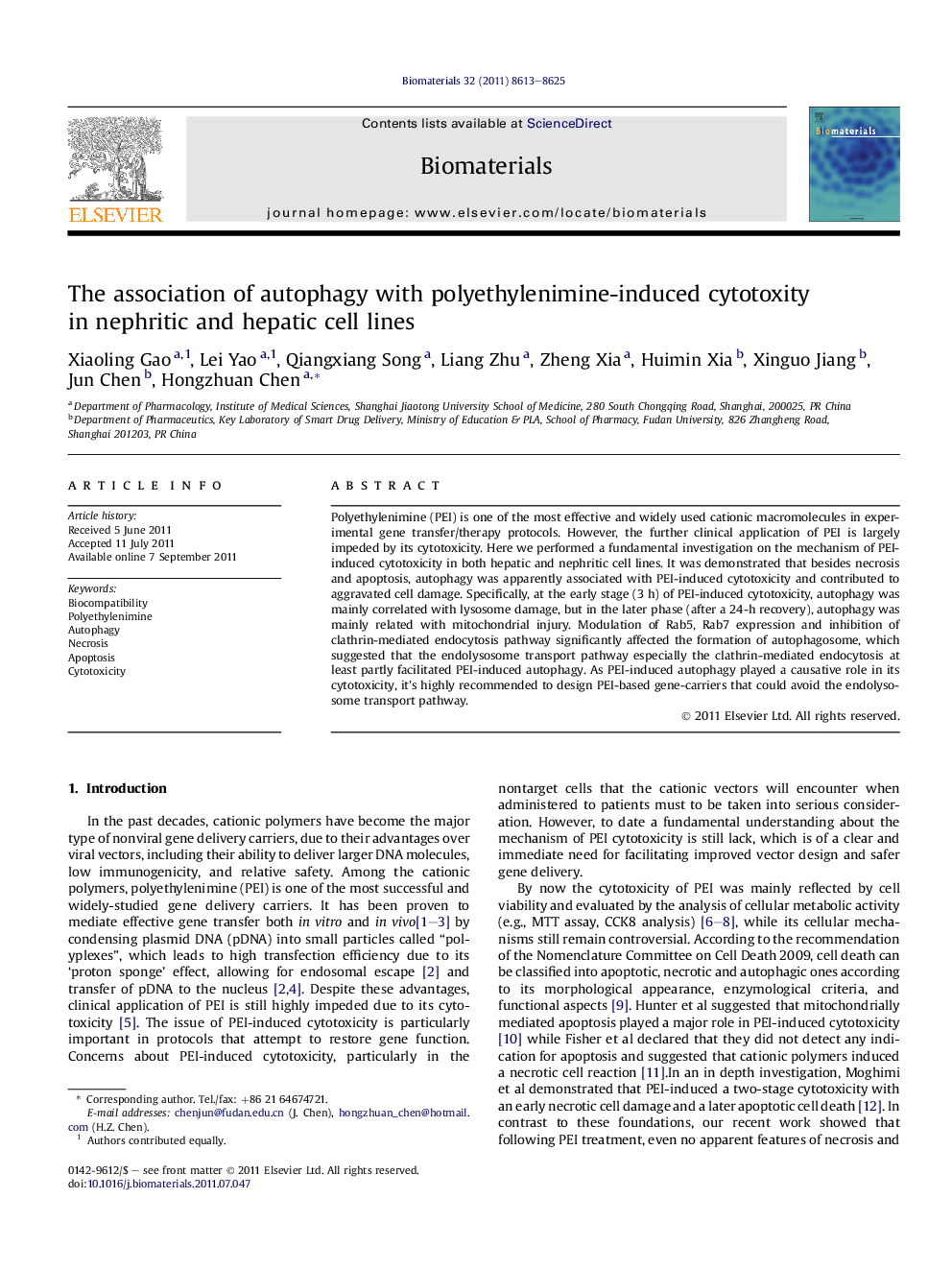| Article ID | Journal | Published Year | Pages | File Type |
|---|---|---|---|---|
| 7253 | Biomaterials | 2011 | 13 Pages |
Polyethylenimine (PEI) is one of the most effective and widely used cationic macromolecules in experimental gene transfer/therapy protocols. However, the further clinical application of PEI is largely impeded by its cytotoxicity. Here we performed a fundamental investigation on the mechanism of PEI-induced cytotoxicity in both hepatic and nephritic cell lines. It was demonstrated that besides necrosis and apoptosis, autophagy was apparently associated with PEI-induced cytotoxicity and contributed to aggravated cell damage. Specifically, at the early stage (3 h) of PEI-induced cytotoxicity, autophagy was mainly correlated with lysosome damage, but in the later phase (after a 24-h recovery), autophagy was mainly related with mitochondrial injury. Modulation of Rab5, Rab7 expression and inhibition of clathrin-mediated endocytosis pathway significantly affected the formation of autophagosome, which suggested that the endolysosome transport pathway especially the clathrin-mediated endocytosis at least partly facilitated PEI-induced autophagy. As PEI-induced autophagy played a causative role in its cytotoxicity, it’s highly recommended to design PEI-based gene-carriers that could avoid the endolysosome transport pathway.
